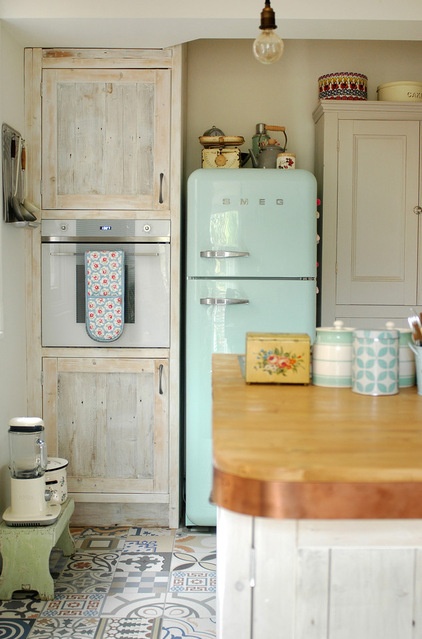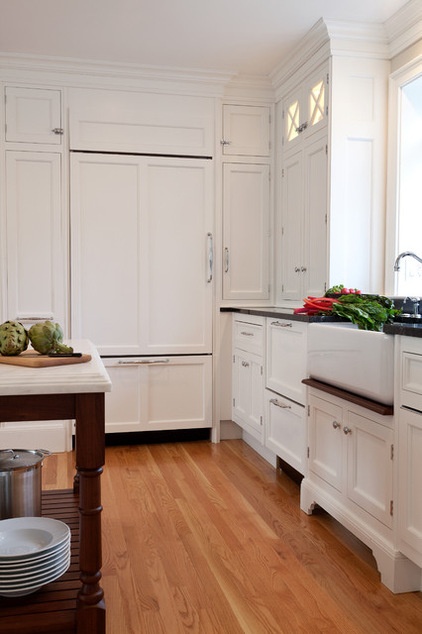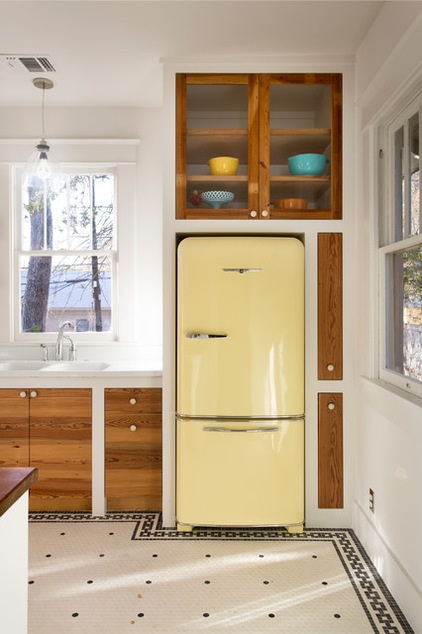How to Clean Your Fridge, Inside and Out
Until you find your kitchen invaded by a UFO (Unidentified Foul Odor), it’s easy to take a clean-smelling fridge for granted. But the perks of keeping one of the hardest-working home appliances in top shape go beyond eliminating unwanted “science projects” and unsavory smells.
“There are many reasons a refrigerator needs to be kept clean,” says Meg Roberts, president of housekeeping service Molly Maid. “A clean refrigerator can keep food fresh for a longer period of time. Due to the moisture in the fridge, cross contamination can easily occur, so it’s necessary to take precautions. Plus, a stuffed fridge means some items are hidden away, causing food to go to waste.”
Bottom line: A clean refrigerator not only looks and smells better, it will also function more efficiently and can ultimately save you money. Here’s how.


Clean Living
Roberts recommends doing a top-to-bottom deep clean on the refrigerator every season, but at the bare minimum at least twice a year.
To begin, unplug the refrigerator or turn it off at the breaker switch. Although plastic shelves and drawers can be washed with hot water and dish soap while still cold, glass and ceramic parts have the potential to crack if not allowed to come to room temperature.
Empty the contents of the fridge into a waiting cooler. Toss expired packages, dubious leftovers and food that is no longer fresh.

Pretty on the Inside
Next, remove empty shelves and drawers and set them aside.
Working from top to bottom, wipe down the fridge interior with a solution of 2 tablespoons of baking soda mixed with 1 quart of hot water. “This solution will not leave behind a scent,” Roberts says. “Many people just reach for common soap, but that doesn’t always work as well, and it leaves behind a scent that can be unwanted on kitchen appliances.”
For sticky or stubborn spills that have crystallized, increase the elbow grease using a nonabrasive scrubbing tool or lay warm, wet paper towels or cloths over the area for a few minutes to penetrate and loosen whatever’s on there.

Don’t forget to wipe down the inside of the door and hard-to-reach crevices that trap dirt and crumbs. Keep an old toothbrush on hand for cleaning awkward nooks and seams.
Since bulky drawers and shelves can be slippery when wet, consider wearing dishwashing gloves for a better grip. Then, using either the baking soda solution or mild dish soap and water, wash and dry the shelves and drawers.
Once the interior and the drawers and shelves are dry, replace everything, including the food, and turn the power back on.

Dirty Trick
“It’s common to forget to clean the items inside the refrigerator,” Roberts says. “When emptying out the fridge for a deep clean, make sure to take a damp microfiber cloth and wipe down the bottom and outside of any jars, dressings or other items.”
Roberts says another area that is often overlooked is the rubber seal on the door. She suggests wiping it down with a microfiber cloth. Keeping the seal in good condition improves the effectiveness of the appliance, reduces the energy bill and lengthens the life of the fridge.

Ice, Ice Baby
“Freezers need to be kept in top shape like refrigerators,” Roberts says, “and because the freezer is a place for long-term storage, it often becomes more packed than the fridge. We recommend cleaning the freezer as often as the refrigerator, and the same steps apply.”

Quick Fix
For between cleanings, Roberts offers this tip: “To keep a clean-smelling fridge, place a small amount of coffee beans on a plate [inside the appliance] overnight. The coffee beans will soak up and mask any bad odors.” Another reason to love coffee.
An open box of baking soda inside the fridge is a similar solution. Just be sure to write the date on the box and swap it for a fresh one every 30 days for optimal effectiveness.

Drip-Pan Protocol
Some refrigerators have a removable drip pan, located on the bottom of the appliance just above the condenser coils. You can determine if you have one by removing the front grille and checking with a flashlight. This feature is designed to collect condensation and prevent it from hitting the coils or the floor. Warning: If you do have a drip pan but have never (or rarely) cleaned it, there is a good possibility it may be moldy and in need of cleaning. Like, stat. Depending on how squeamish you are, you might consider wearing gloves.
After pulling out the drip pan, clean it with dish soap or a suitable cleanser, and dry thoroughly.
Before replacing the pan, you may want to use a vacuum attachment to clear out accumulated dust.

Cleaning Coils
And speaking of vacuuming, refrigerator coils attract dust like a magnet and are vital to peak performance. Appliance manufacturer GE says if the refrigerator is running cold, but not cold enough, dusty condenser coils may be the culprit.
In fact, GE notes that homes with pets that shed, or in areas that are particularly dusty (think garages), condenser coils collect dust more quickly.
Here’s GE’s advice for getting coils clean:
First unplug the refrigerator to minimize the possibility of electric shock.
If coils are on the bottom: Remove the base grille if necessary and use a refrigerator coil brush (you can find them online and at stores that sell appliances), then sweep or vacuum up any dirt and dust on the floor. Replace the grille and plug the appliance back in.
If coils are on the back: Move the fridge away from the wall carefully and wipe away accumulated dirt and dust. Sweep or vacuum up anything that fell on the floor. Finally move the fridge back into place, being careful to avoid running over cords or tubing, and plug it back in.
If coils are on the top: For built-in appliances, disconnect the power at the fuse box or circuit breaker, then raise the grille panel at the top of the refrigerator. Be warned: The condenser fins have sharp edges. Wear a protective long-sleeved shirt and gloves for safety.
If you have a model with the condenser coils located at the very back of the machine behind the compressor, you will have to reach through the middle with a soft bristle brush to loosen dust and lint on the condenser fins, then use a vacuum hose to remove the dirt. When you’re done, restore the power.
If you have misplaced the owner’s manual for your refrigerator, check the manufacturer’s website to see if there are specific directions for your model.

The Big Finish
Finally, wipe down the outside of the refrigerator from top to bottom.
On a fridge with an enameled steel surface, wipe it down with a soft cloth and mild soap and water, or a fresh mixture of the baking soda and water solution used earlier.
For stainless steel surfaces, Roberts says, “Dab a few drops of baby oil on a clean microfiber cloth and rub the surface along the grain.”
See how to clean: Hardwood floors | Marble countertops and tile | Glass showers












